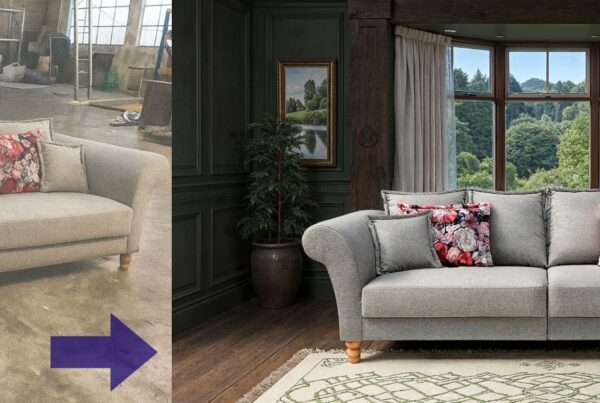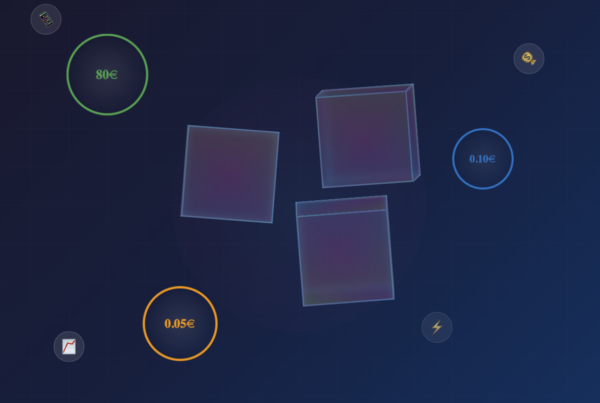AR as a new marketing tool in social media
Augmented reality in eCommerce is increasingly being used by different companies. And so is it on social media. Almost everyone is familiar with the classic Snapchat filters, which have become increasingly interactive over time. Instagram and Facebook have also developed filters for their respective platforms and allow users to create their own filters. Nowadays it has become almost standard to apply some kind of filter effect when posting. However, Snapchat Lens and Instagram filters are not just for entertainment. Many companies have recognised that augmented reality in the form of filters on social media is a highly efficient marketing tool for making their own brand viral. This year alone, 63% of daily Snapchat users use an AR filter, and 90% of Snapchat users are also active on Instagram. These are promising figures, and rightly so, as most marketing experts now agree that the potential of social media must be fully utilised in order to push your own company. Combined with the latest trends such as augmented reality, brand awareness can be increased in an interactive and entertaining way.
Snapchat Lens and Instagram filters are now also being used by brand giants such as Coca Cola to increase brand awareness and interact with the wider audience on social media through quickly shareable content.
AR filters and lenses – what’s the difference?
The two terms are often used interchangeably, but there are major differences between augmented reality filters and so-called lenses.
Filters come close to static images that are “put over” the camera shot. A black and white effect or a frame around the shot are static filters. This is the simplest form of an augmented reality effect on social media and can be created quickly using platform-specific tools or even Photoshop.
Lenses, on the other hand, are a little more sophisticated, as this is an interactive AR effect. The term lens filter was mainly popularised by Snapchat. The company also offers its “Lens Studio” platform as a tool for the simple creation of lenses and filters for its users. Lenses are a combination of 2D, 3D and animation effects. They react to gestures, facial expressions and movements. One example of this is an effect where an animated tongue sticks out as soon as you open your mouth.
Snapchat lenses
Snapchat is the first social media platform whose core business consists mainly of augmented reality filters. It is particularly interesting for brands whose target market overlaps with that of Snapchat. Sponsored lenses that are added to the app’s lens menu allow users to easily find and access their own filter. Especially if the filter contains keywords that are currently trending, the chance of achieving organic growth in brand awareness is even higher.
AR applications on Snapchat differ slightly from other channels such as Facebook or Instagram because some features are different. Advertising is also a little different, because companies do not have a public profile that interested parties can visit. However, the engagement, especially with the filters, is often a little more personal. The app is designed so that you can exchange information with close friends through direct communication. Snapchat lies somewhere between a news platform and an entertainment medium, allowing companies to use an AR filter campaign for storytelling on a very personal level.
Instagram Filter
Advertising campaigns can also be run on Instagram using AR filters. In contrast to Snapchat, posts with filter shots can be published directly on a profile and therefore also appear in the feed of followers.
The most effective way to make your AR filter go viral on Instagram is to publish story content with the effect. All users who see the filter in the story can then try it out for themselves with one click, take photos and videos with it and then share them. The process can be accelerated by an influencer campaign, for example. It is important to network with those bloggers whose target group also fits the company.
How to create AR filters and lenses?
Both Snapchat and Instagram offer tools that allow users to create their own filters. However, this is not entirely effortless. In addition to ready-made templates from which you can quickly and intuitively put together a filter, the situation is different if you want to personalise the effect. Snapchat’s Lens Studio and Instagram’s SparkAR are both programmes and very good tools for creating personal filters. However, these are programmes that have to be downloaded in advance, just like Photoshop or other editing programmes. As many want to save themselves the trouble of familiarising themselves with the software, Mazing offers a remedy here too, and gives companies quick and time-saving access to AR filters for their own marketing campaigns on social media.







